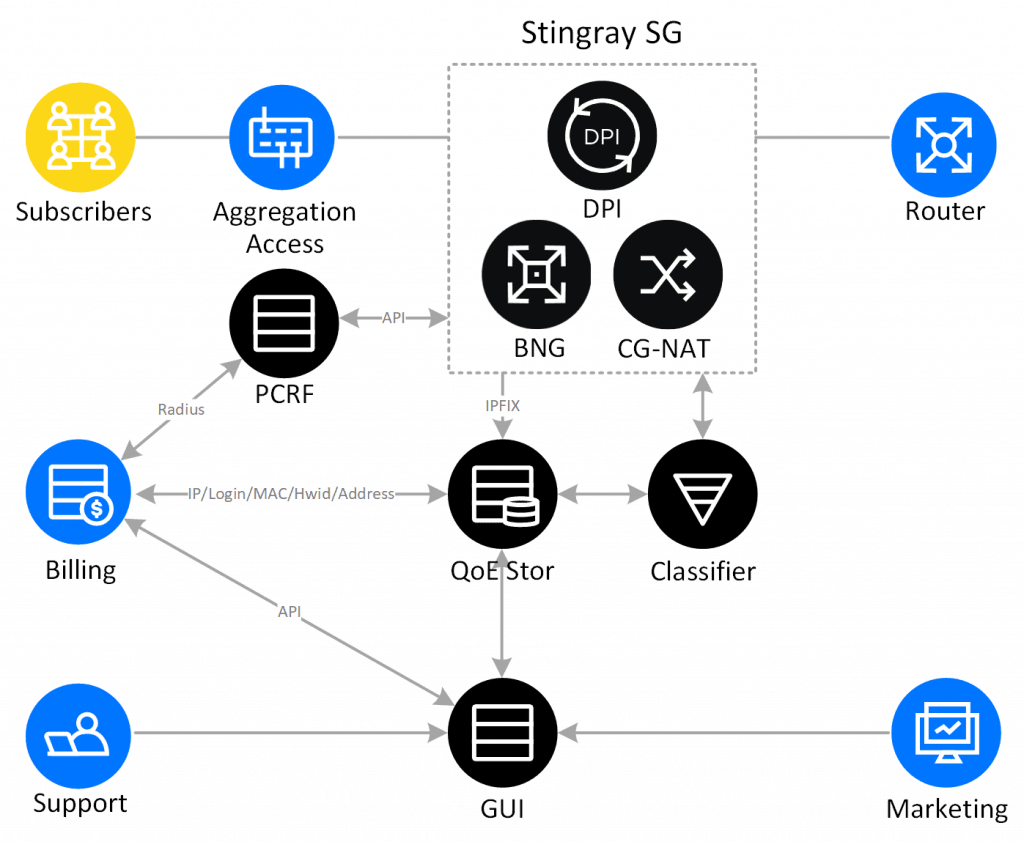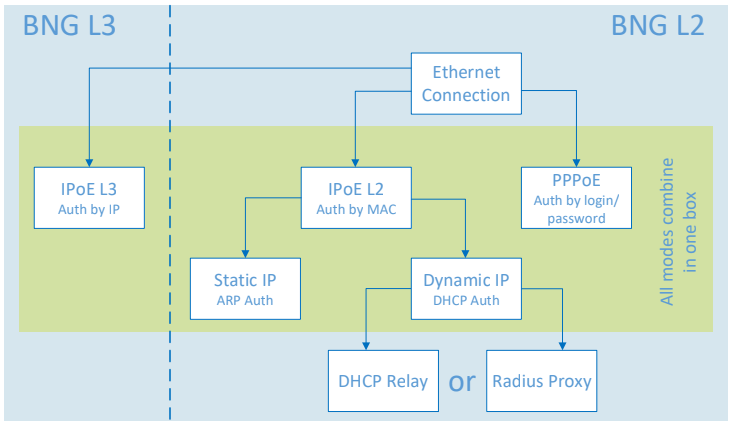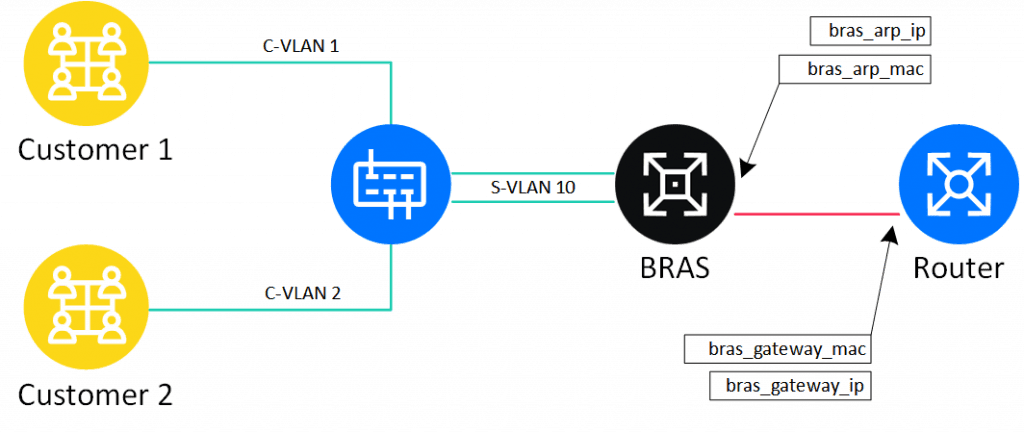
Reasons to replace BRAS/BNG
- The first and main reason is traffic and the subscriber base growth, and as a consequence, requirement of the network expansion and increasing bandwidth.
- The other reason for the ISPs request to replace BNG is unstable operation of the existing equipment. If there are periodic fails or even break-downs, there is no other choice but to replace the current solution with a more productive and flexible analogue.
Moreover, the following tasks push the telecom operator to replace BNG:
- The necessity to comply with regulator’s requirements. Regulations of the government and regulatory authorities differ from region to region, but it is necessary to comply with them in any case. The operator starts solving this problem by building it into the current network architecture, but it doesn’t always work out.
- Carrier Grade NAT implementation. IPv4 address limit forces the use of NAT and before implementation of this technology, it is worth considering whether to implement it separately or to build it into a solution that already exists.
- IPv6 support. This option does not bring the operator an immediate profit, but ISPs market competition forces the providers to offer customers a full-fledged Dual Stack IPv4/IPv6.
- Implementation of new services by the request of marketing and sales departments to gain additional profits.
How to choose BRAS/BNG for the operator’s network?
What you should pay attention to when choosing a solution:
- What are the needs of your business, and can the solution meet them?
- How will the network develop over the next 5-10 years, and will the chosen solution cope with its tasks during this period of time?
- What technologies need to be supported right now?
Let’s consider each of these aspects separately.
ISP’s business requests
Ongoing growth of Internet traffic leads to increased subscribers’ expectations and high competition between providers. To provide the best quality of services, an operator must think about managing network bandwidth and ensuring that there are no interruptions to the Internet connection.
It doesn’t matter how much bandwidth you provide, the evolving telecommunications market will always need more, as the number of devices and applications in use grows every day.
For these reasons, operators need a solution that solves at least three business tasks:
Easy operation
- Transparent architecture and simple operating principles
- Redundancy option
- Fast response of technical support
- Customization for your network
Justified investments
- Reliable vendor and solution
- Value for money
- Product development and its long-term use
Business development
- Detailed analytics of the subscriber base and their needs
- Expansion of the range of services and upselling

Flexible solution for future development
The trend of Internet traffic growth will obviously exist in the coming years (because of the emergence of IoT devices, active use of cloud storage and video streaming). At the same time, subscribers are becoming more and more attentive to the quality of communications. This forces broadband service providers to upgrade and scale their network infrastructure, so that they won’t lose market share and loyal customers.
- Once you buy a software license, you can flexibly modify it: add functionality, expand it to match the growing traffic volume, transfer it to other equipment, combine or share functionality across multiple servers.
- The Stingray SG solution is multifunctional: you get BRAS + CG-NAT + DPI available on one server.
- Can be installed on affordable x86 servers. Thanks to that, the ISP can upgrade, scale and increase power of equipment independently.
- Supports dividing of one tariff plan between several IP addresses: one login – many IPs (so-called multiusers).
- Creates an IPv6-ready network thanks to Dual Stack v4-v6 support and the ability to gradually migrate to the new protocol.
- Leverages existing network resources by prioritizing individual protocols, ensuring Uplink is not overdrawn.
- Ensures subscribers’ expectations of always being connected: availability of critical services (e.g., messengers and video) takes priority over background downloads (Windows updates and torrent downloads).

- Fault tolerance is provided by an additional Stand-by license: Active-Stand-by cold redundancy or Active-Active hot redundancy
- Performance up to 200 Gbps using a CPU with 64 cores
- Control Plane – CentOS8
- Data Plane – DPDK (Direct NIC Access technology)
Technologies
In case if Internet service provider is on an early stage of development, it is important to carry out the continuity of already used technologies with the possibility to apply modern solutions in the future. For example: combining PPPoE authorization in one BRAS and terminating users with DHCP authorization inside Q-in-Q tunnels.
VAS Experts’ BRAS supports L2 and L3 modes:
- L3 and authorization by IP when there is a routed network to BRAS and no endpoint MAC address of the device is visible
- L2 with MAC and static IP authentication and authorization by ARP-request to the default gateway
- L2 with DHCP query authorization: Options with DHCP Relay or Radius Proxy
- L2 PPPoE with login/password authentication at the beginning of the PPP session

- L2/L3 BRAS modes
- BRAS/CG-NAT/DPI/URL-Filtering combination
- Full RADIUS support (CoA)
- High availability with PCRF server
- Quick start from UDR base
Q-in-Q termination / VLAN / PPP in BRAS L2

Full isolation on L2 level:
- Excludes: broadcast attacks, sharing
- Reduces access switch requirements
- Simplifies IPv6 deployment
Conclusion
When choosing a BRAS solution, an Internet service provider should look at modern technologies that allow implementing of a software solution on common server hardware. The development of CPUs allows using vBNG instead of Hardware solutions and get significant advantages.